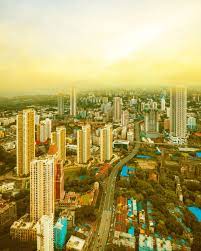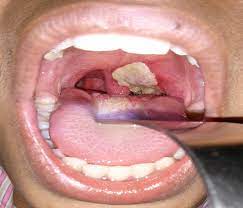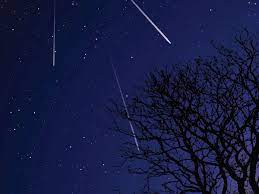Today’s Current Affairs: 20th Oct 2023 for UPSC IAS exams, State PSC exams, SSC CGL, State SSC, RRB, Railways, Banking Exam & IBPS, etc
Table of Contents
Microalgae : Study

A study published in the journal Nature Microbiology has revealed that microalgae, crucial in the ocean’s food chain and carbon capture, have developed a unique strategy to adapt to global warming and declining nutrient levels in the sea.
- As climate change reduces nutrient availability, these microalgae activate a protein called rhodopsin, similar to the protein in the human eye responsible for vision in dim light.
- This light-responsive protein enables microalgae to thrive by using sunlight as an alternative to traditional chlorophyll for growth.
- The study suggests that microbial rhodopsins are significant light capturers in the ocean, potentially absorbing as much light as chlorophyll-based photosynthesis.
- As global warming leads to nutrient scarcity at the ocean’s surface due to reduced mixing between the surface and deeper waters, microalgae struggle to produce food and capture carbon dioxide.
- This mechanism may have applications in biotechnology for enhancing the activity of light-dependent microbes for various purposes, from insulin production to biofuel.
ASICS 2023 Report:

The sixth edition of the Annual Survey of India’s City-Systems (ASICS) 2023 report has been released by Janaagraha
- The Annual Survey of India’s City-Systems (ASICS) is a comprehensive evaluation of the quality of governance in Indian cities.
- It was published after a gap of five years (the last was in 2017).
- The ASICS report this time focused on the state as a unit instead of ranking cities as they did in the past.
Key findings:
- Pace of Urbanization Outlays to the Ministry of Housing and Urban Affairs have increased significantly, but urbanization is outpacing reform efforts, leading to persistent quality-of-life challenges.
- 51% of states/union territories lack accessible urban legislation in the public domain.
- 39% of India’s capital cities do not have an active master plan.
- Eastern states have better urban legislation, followed by Southern states.
- Highly urbanized and large states perform better in urban planning.
Outbreak Of Diphtheria:

The World Health Organization (WHO) recently said that the Health Ministry of Guinea has reported an outbreak of diphtheria.
- It is a highly contagious and infectious disease that causes severe inflammation of the nose, throat, and windpipe (trachea).
- It is caused by strains of bacteria called Corynebacterium diphtheriae that make a toxin. It is the toxin that can cause people to get very sick.
- The infection can transmit from a person with the infection to any mucous membrane in another person.
Diphtheria bacteria spread from person to person, usually through respiratory droplets, like from coughing or sneezing.
People can also get sick from touching infected open sores or ulcers. - Diphtheria signs and symptoms usually begin 2-5 days after a person becomes infected. Signs and symptoms may include:
- A thick, gray membrane covering the throat and tonsils
- A sore throat and hoarseness
- Swollen glands (enlarged lymph nodes) in the neck
- Difficulty breathing or rapid breathing
TV-D1 Mission : ISRO

Indian Space Research Organisation (ISRO) is set to launch its first-ever test flight, TV-D1, for the Gaganyaan mission, marking a pivotal moment in India’s pursuit of human spaceflight.
- TV-D1 Mission will evaluate the crew module’s readiness for the Gaganyaan mission.
- It is a single-stage liquid rocket developed specifically for this abort mission.
- The payloads consist of the Crew Module (CM) and Crew Escape Systems (CES) with their fast-acting solid motors, along with CM fairing (CMF) and Interface Adapters.
- This flight will simulate the abort condition during the ascent trajectory corresponding to a Mach number of 1.2 encountered in the Gaganyaan mission.
- The abort and crew escape system operates on a similar principle to an ejection seat found in fighter jets, with the primary goal of safeguarding the lives of crew members in the event of in-flight anomalies.
- The Crew Escape System is engineered to automatically function across various altitudes should the onboard computer detect any malfunctions.
- This test flight will simulate an abort condition during the ascent trajectory
Kati Bihu:

The Prime Minister of India extended best wishes on the auspicious occasion of Kati Bihu to the people of Assam.
- Kati Bihu is celebrated in the state of Assam.
- Kati means to cut and this day marks the time of relocation of rice saplings.
- It is also known as Kongali Bihu.
- There are another two Bihu festivals celebrated in Assam – Bhogali or Magh Bihu is observed in January and Rongali or Bohag Bihu is observed in the month of April.
- During this month, there are not so many things to eat.
- They celebrate this festival by lighting the earthen lamps or candles and lit their house with lighting.
- Lighting diya near Tulsi plant is one of the main part of the festival. They worship Tulsi plant on this auspicious day.
- People also light a special lamp called “Akash Banti” (Sky candle) in their paddy fields.
Orionid Meteor Shower:

The Orionid meteor shower is expected to rain down its greatest number of meteors on the mornings of October 21 and 22.
- Orionid meteor shower is an annual phenomenon that lights up the night sky every October.
- It is produced when Earth passes through the debris left behind by Halley’s Comet, officially known as 1P/Halley.
- This comet, which orbits the sun approximately every 76 years, expels dust particles from its nucleus, creating a trail of debris in its path.
- Each year, our planet intercepts this path in late October, resulting in the Orionid meteor shower.
- Halley’s Comet, measuring about five by nine miles in size, loses between three to ten feet of material on each passage through the inner solar system.
- The Orionids are viewable in both the Northern and Southern hemispheres during the hours after midnight.
Niemann-Pick Disease:

Parents of children suffering from Niemann-Pick disease have urged the Union government to notify the ailment under the National Policy for Rare Diseases.
- Niemann-Pick Disease is a rare genetic disorder in which sphingomyelin accumulate in lysosomes inside cells.
- This disease involves dysfunctional metabolism of sphingolipids.
- The three most commonly recognized forms are Niemann-Pick Types A and B and Type C.
- This disease can affect the brain, nerves, liver, spleen, bone marrow and, in severe cases, lungs.
- People with this condition experience symptoms related to progressive loss of function of nerves, the brain and other organs.
- It can occur at any age but mainly affects children.
- It is inherited in an autosomal recessive pattern, which means both copies of the gene, must be defective to cause the disease.




